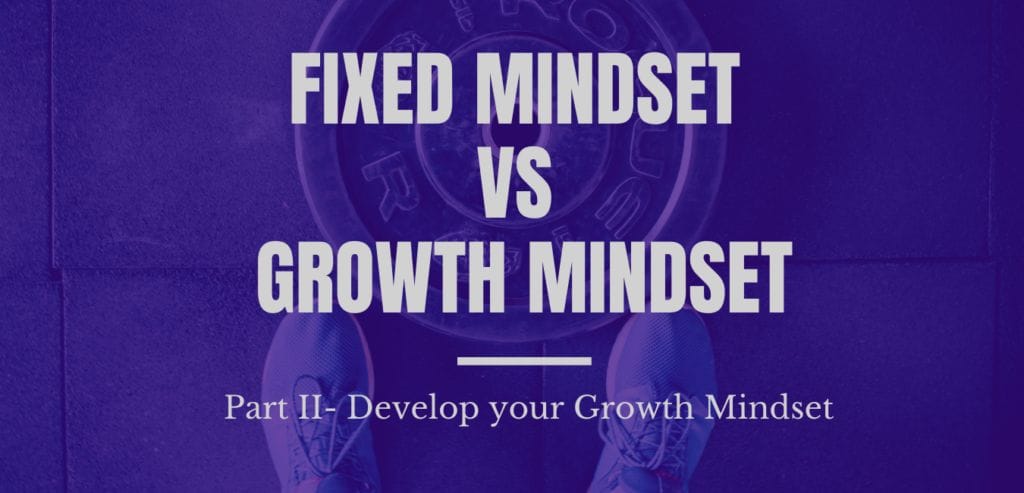Now that we understand the differences between a Fixed Mindset and a Growth Mindset, it’s time to dive into some practical steps for adopting a stronger Growth Mindset!
1) Tell yourself a different narrative
There is power in the story that we tell ourselves. What we tell ourselves shapes how we approach challenges and difficult situations. Ask yourself this question: Do I tell myself I am capable? Or do I tell myself “I can’t” and give up? How we interpret and react to challenges is directly related to the narrative we tell ourselves. So, the first step toward adopting a growth mindset is to learn how to identify when we’re telling ourselves a narrative that reflects a fixed mindset and then shift our thoughts to reflect a growth mindset.
Instead of telling yourself:
- I can’t do it
- I’ll never be able to do that
- This is too hard
- I give up
Tell yourself:
- I can do it
- I believe in myself
- It’s okay to fail
- I am going to keep trying
2) Set process goals
Goals that are focused on the outcome reflect a fixed mindset and with these goals, we are only satisfied if we obtain the outcome we were reaching for. However, if we set goals that are focused on the process, rather than the outcome, we can be satisfied by the small, continuous improvements that build upon each other over time. By shifting to process, or learning, goals we can choose a path of hard work, deliberate effort, and persistence which is ultimately the key to success. Success does not come overnight; it takes years of continuous learning and hard work. It’s a process!
3) Use your failures
Failure teach us more than success ever will, but we have to be willing to use our failures and learn from them. Rather than hiding from failures and giving up when faced with an obstacle or a setback, use those failures and setbacks as an advantage. We can do this by reviewing failures to find out what did not work and develop new strategies to improve and correct mistakes. Once you learn to look as failures as opportunities for learning and growth, then you will be able to capitalize on them.
4) Step just outside of your comfort zone
If you can’t walk five miles you can’t expect to climb a mountain next month. There is a difference between taking on challenges and being impractical. The key when taking on challenges or developing new skills is to take on tasks and activities that are slightly above our current abilities. One small step at a time. These tasks will gradually build on one another to help us reach our goals. For example, if you can currently box jump to a 12-inch box, but your goal is to jump to a 24-inch box, you can take on the task to jump to a 16-inch box. It is slightly higher than your current ability and a practical step toward your goal. Repeating this process will lead to success in both your fitness and life goals.5
5) Be consistent
Transitioning from a fixed to a growth mindset requires practice. We need to be consistent in reflecting on past fixed mindset thoughts and behavior and how we can learn from them. In doing so, we will be able to identify our fixed mindset triggers as well as deliberately apply strategies to help us adopt a growth mindset.




